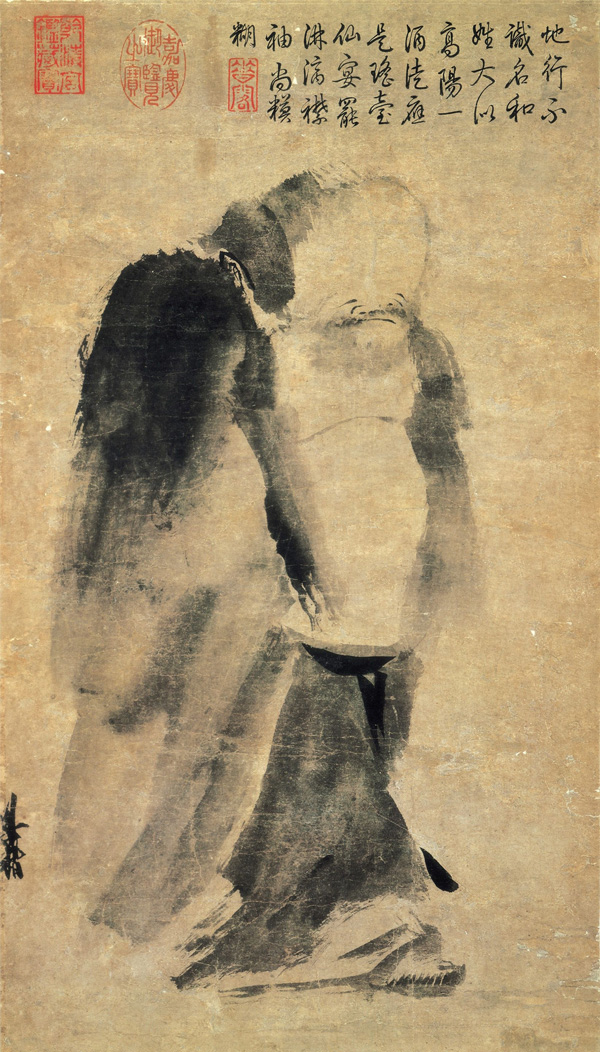Immortal in Splashed Ink (潑墨仙人)
Liang Kai (梁楷, c.1140-1210), Song Dynasty (960-1279)
Hanging scroll, ink on paper, 48.7 x 27.7 cm, National Palace Museum, Taipei
When Liang Kai was at court, his paintings were admired for their refined brushwork. This album leaf, however, is said to be a masterpiece from his period of drinking and spontaneous painting. The immortal shown here also appears to be somewhat inebriated. As a being of elevated status, his proportions also differ from those of ordinary mortals. The protruding forehead and rounded belly are accented by a few shods of hair and surrounded by unkempt robes that hang loosely down. No lines were used for these parts of the painting as only a few short slanted strokes were employed to define some of the details. Brushwork, however, defines the belt.
The painting was first sketchily rendered in light washes of ink, and then darker ink was applied before the washes had dried in order to convey the weight of the immortal's body. The remaining elements, such as the humorous facial features, were dotted to give the final touch to the immortal's mysterious qualities. Despite the brevity of the work, nothing seems to be missing. This type of brushwork, in which the number of brushstrokes is reduced, is often referred to as "abbreviated brush (減筆)" and used in Buddhist and Taoist figure painting to convey the untrammeled qualities of the supernatural beings. It is said that when Liang Kai sobered up, he looked upon this painting with a sense of pride.

Replicas available: